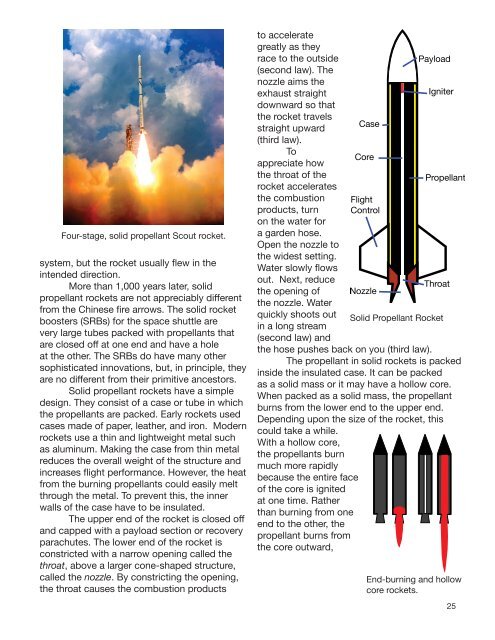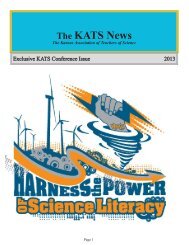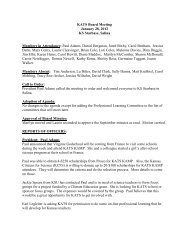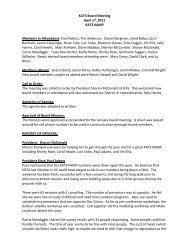You also want an ePaper? Increase the reach of your titles
YUMPU automatically turns print PDFs into web optimized ePapers that Google loves.
Four-stage, solid propellant Scout <strong>rocket</strong>.<br />
system, but the <strong>rocket</strong> usually flew in the<br />
intended direction.<br />
More than 1,000 years later, solid<br />
propellant <strong>rocket</strong>s are not appreciably different<br />
from the Chinese fire arrows. The solid <strong>rocket</strong><br />
boosters (SRBs) for the space shuttle are<br />
very large tubes packed with propellants that<br />
are closed off at one end and have a hole<br />
at the other. The SRBs do have many other<br />
sophisticated innovations, but, in principle, they<br />
are no different from their primitive ancestors.<br />
Solid propellant <strong>rocket</strong>s have a simple<br />
design. They consist of a case or tube in which<br />
the propellants are packed. Early <strong>rocket</strong>s used<br />
cases made of paper, leather, and iron. Modern<br />
<strong>rocket</strong>s use a thin and lightweight metal such<br />
as aluminum. Making the case from thin metal<br />
reduces the overall weight of the structure and<br />
increases flight performance. However, the heat<br />
from the burning propellants could easily melt<br />
through the metal. To prevent this, the inner<br />
walls of the case have to be insulated.<br />
The upper end of the <strong>rocket</strong> is closed off<br />
and capped with a payload section or recovery<br />
parachutes. The lower end of the <strong>rocket</strong> is<br />
constricted with a narrow opening called the<br />
throat, above a larger cone-shaped structure,<br />
called the nozzle. By constricting the opening,<br />
the throat causes the combustion products<br />
to accelerate<br />
greatly as they<br />
race to the outside<br />
(second law). The<br />
nozzle aims the<br />
exhaust straight<br />
downward so that<br />
the <strong>rocket</strong> travels<br />
straight upward<br />
(third law).<br />
To<br />
appreciate how<br />
the throat of the<br />
<strong>rocket</strong> accelerates<br />
the combustion<br />
products, turn<br />
on the water for<br />
a garden hose.<br />
Open the nozzle to<br />
the widest setting.<br />
Water slowly flows<br />
out. Next, reduce<br />
the opening of<br />
the nozzle. Water<br />
quickly shoots out Solid Propellant Rocket<br />
in a long stream<br />
(second law) and<br />
the hose pushes back on you (third law).<br />
The propellant in solid <strong>rocket</strong>s is packed<br />
inside the insulated case. It can be packed<br />
as a solid mass or it may have a hollow core.<br />
When packed as a solid mass, the propellant<br />
burns from the lower end to the upper end.<br />
Depending upon the size of the <strong>rocket</strong>, this<br />
could take a while.<br />
With a hollow core,<br />
the propellants burn<br />
much more rapidly<br />
because the entire face<br />
of the core is ignited<br />
at one time. Rather<br />
than burning from one<br />
end to the other, the<br />
propellant burns from<br />
the core outward,<br />
End-burning and hollow<br />
core <strong>rocket</strong>s.<br />
25










